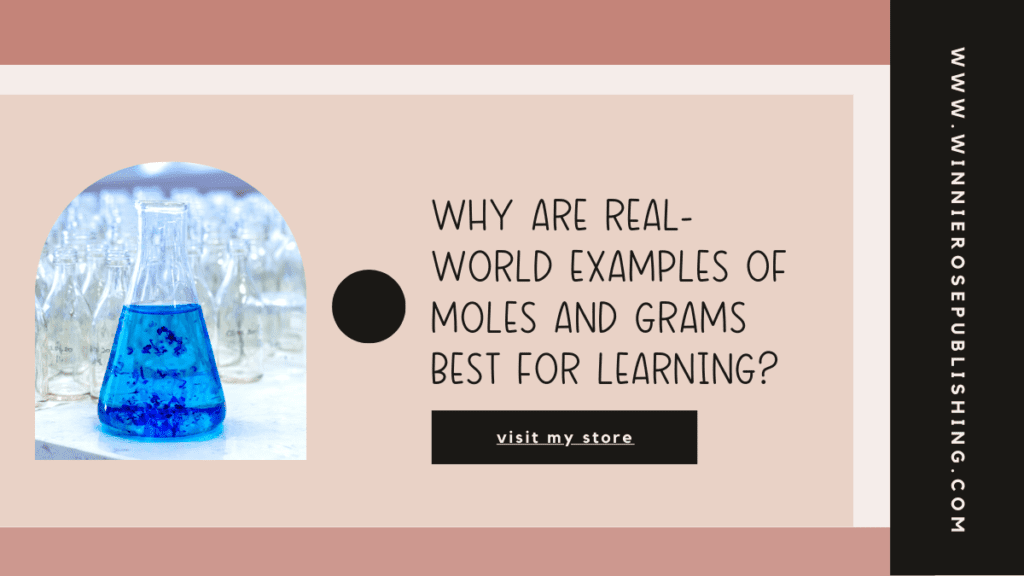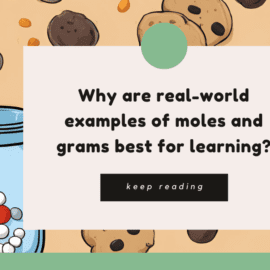
Teaching students solution calculations with more engagement
All year the students have seen the reagent bottles in your lab that indicate the concentration. A few of the more astute ones have asked ‘what does the 3 M mean in front of the HCl?” It is time that they learn what that means and how to calculate it. They can learn that some disciplines use weight percent and mass percent (like most consumer products) and some use molarity. Even a few equations use molality or normality – but these two might be beyond the scope of your high school chemistry class. I know there are several old worksheets in your file cabinet left by the previous teacher. There are definitely several such worksheets in my classroom file cabinet. The worksheets have dozens of random problems that are not connected to any real examples. The students can happily plug and chug away and complete that worksheet.
But is that the best option? Are you having any fun watching that? Are your students having any fun doing that? Will the knowledge and its application to real situations stick with them? You would like something more interesting, or clever, or engaging, but you really don’t have the time or mental space to devise a creative solution. No worries, my friend. I got you.
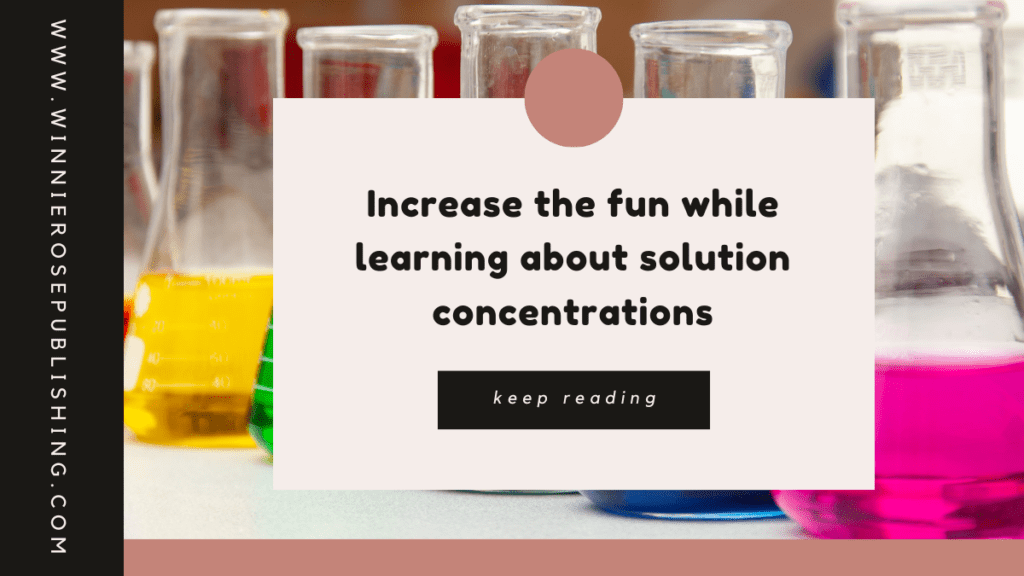
5 Ways to teach concentration of solution calculation
Let me give you some ideas that are more interesting than that dusty old worksheet in the file cabinet. They will pay off well in terms of student learning and engagement. Win – win, right?
Task Cards
- 1. Give task cards a try – You may think that task cards are something used only with younger students, but I find in my classroom (high school honors chemistry) that students like getting out of their seats to wander the room. They appreciate the option to choose which problems to do. If I have a set of 24 cards, I can ask that a student does the evens, or the odds, or a choice of any 12. Here is a link to a set of solution task cards that I have used and the results are great.
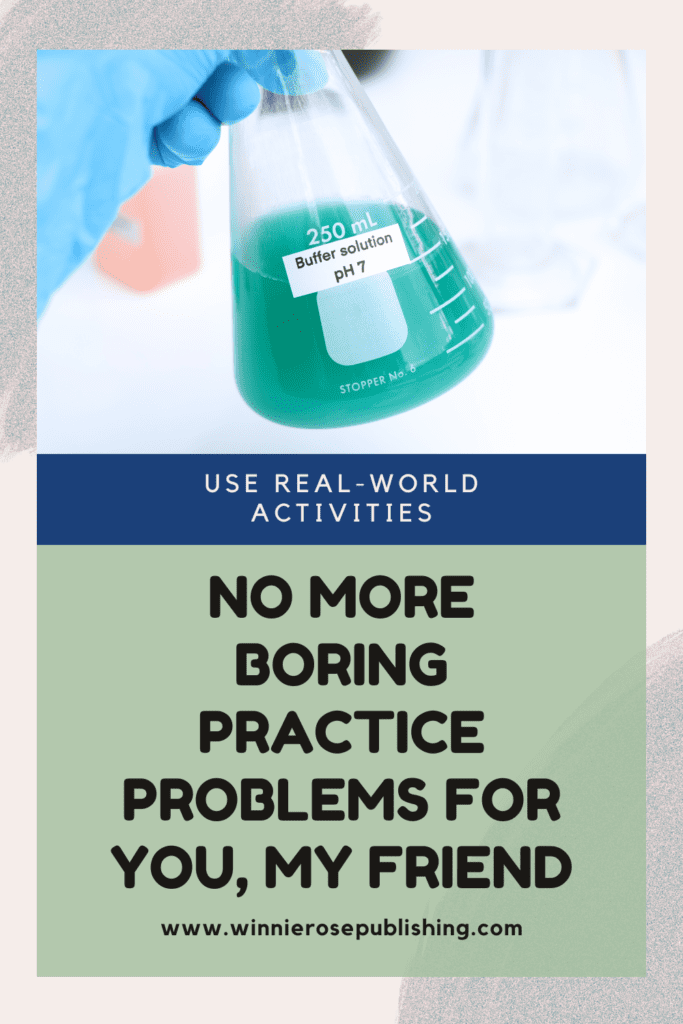
Real-World Examples
- 2. Real world things – So many products that we encounter everyday are solutions – from products in the bathroom, to food and drink, to fluids in your car. Why not take advantage of this fact to teach concentration units while also getting students to understand that rubbing alcohol and vinegar are not pure compounds? Pickle juice is a solution, and so is a cup of coffee, and also the floor cleaner I use to clean up the coffee I invariably spill most mornings. The list of ingredients on the websites of most of these products will give a mass percent or volume percent of the major components. Finding the amount of caffeine in the average cup of coffee vs in their favorite brand of energy drink is easy enough. Then have students convert that percentage to molarity. Solution calculations seem to suddenly have a purpose and there is more engagement in the room.
- 3. Real-world examples on task cards – why not combine the flexibility of task cards with the engagement of real-world examples? Have them calculate the actual amount of HCl in the pool when they treat it with muriatic acid in the summer. How many milligrams of formaldehyde are in the amount of nail polish when you paint your nails? How much of the active ingredient is in the bucket of diluted floor cleaner? Once you have the solution calculations worked out and put onto cards, the students can choose which ones to do based on what interests them. Want to know the amount of ethylene glycol that is in you car’s radiator if you dilute the antifreeze vs if you use it straight from the bottle? That is an option. This set of cards has all the details worked out for many consumer products.

Hands-on Activities
- 4. Lab examples – If your classroom is better equipped, or you are teaching AP chemistry, why not use the classic lab experiment of making a solution of a colorful transition metal salt (like copper sulfate) and having the students make serial dilutions? Then if your department has a spectrometer available, take the visible absorbance spectra of those samples and focus on how the absorbance changes with concentration. If copper sulfate is not fun enough, do the experiment on Kool-Aid, or some other brightly colored beverage.
- 5. Classroom activity with a drink mix and dilution – for many teachers, example 4 above is out of the range of possibility based on equipment and the level of your class. You can do something similar with a drink mix and a taste test of different dilution factors. Use brightly colored drink mix (the kind that needs no sugar added) and make it according to the directions, or perhaps more concentrated than the directions. The package has a mass on it, and the students can calculate the mass percent of the beverage. Then have them do serial dilutions in paper cups and compare the colors and the taste of the beverage at different dilution factors. Practice with calculations and a snack. Sounds like a win to me.
Real World examples to show how to calculate molarity
There are so many examples of solutions in everyday life. Most consumer products are mixtures, and many are solutions. The ingredient list does not tell how much of each ingredient is present in many cases, but that info is not hard to find online. If your students are interested in health care, have them look up the concentration of salt in an IV bag of saline. Have them do the calculations that a pharmacist would need to do to make that IV. Look up the amount of the active ingredient in cough syrup and convert that to molarity. The options are endless. I promise the students will be more engaged than they were with the old worksheet of disconnected, random examples.
No one wants an old-fashioned concentration chemistry worksheet of solution calculations anymore
I know that there is little time to come up with a new practice problem set during the school year. You suddenly decide one day that you cannot stand it to use that boring practice problem worksheet one more time. Yes, it would be the path of least resistance, but if you had access to a more creative activity that was all set-up and easy to implement, and also reinforced all the concepts and kept the students engaged, you would do it, right? Of course, you would. Maybe you have promised yourself that this year you finally find the energy to switch out a few of the most boring worksheets for something more interesting.
Using consumer products to find the concentration of solution provides so many potential examples to use. Conversion of solution concentration units from mass percent to molarity is a common option for consumer products. Lots of cleaning products involve dilutions of solutions, so why not practice the calculations on those?
Related articles on teaching solution calculations
Moles and Molarity – at BetterLesson covers the basics of the concept
Simulations to Teach Science Subjects: Connections Among Students’ Engagement, Self-Confidence, Satisfaction, and Learning Styles – describes the use of pHET simulations to reinforce concepts
What is so Difficult about Concentration? – addresses how students find this concept abstract and challenging
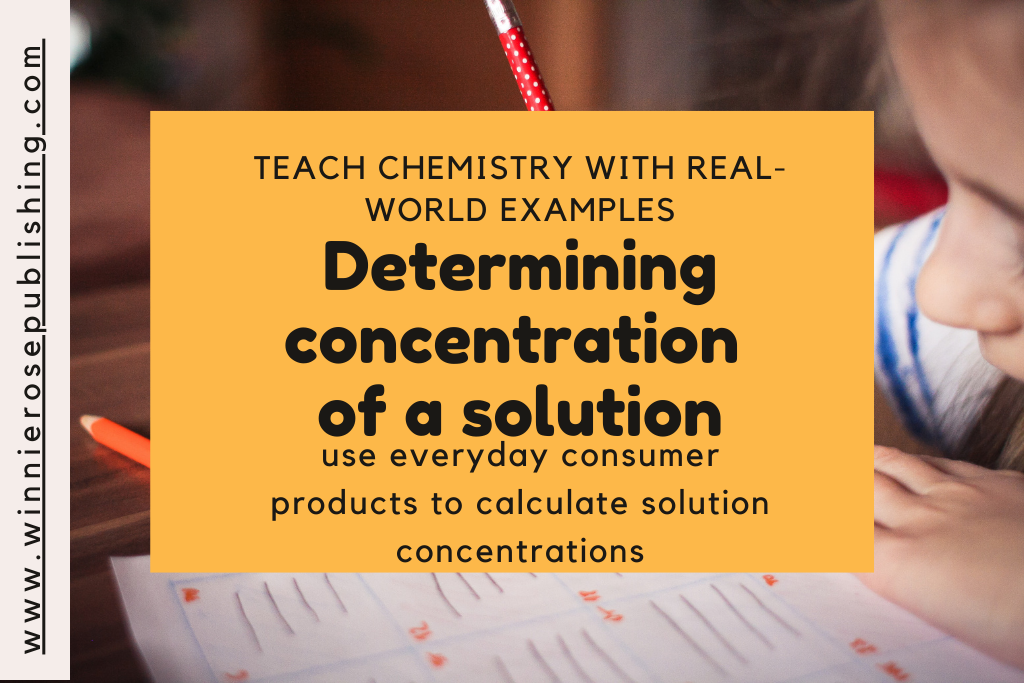
The students need to learn a variety of solution concentration units
Every year I teach my students how to calculate molarity so that they can later do titration calculations. I teach them molality so that I can later introduce freezing point depression. I used to teach mass percent and volume in a cursory way and not connect it to anything really. The world around them is filled with solutions that they use or dilute, then use. Of course, your students will try to learn anything you ask of them, because they want to earn the best grade they can. But wouldn’t it be more fun for everyone involved to connect all this content about solutions to real examples?
For too many years, early in my career, I taught the concepts and made sure to do a few real examples at the end. Now the majority of the examples I use in class and on homework are real situations. I try to emphasize that while the lab scientist speaks the language of molarity and the bug spray at the store lists the active ingredient as a percentage, that does not mean we aren’t all talking about the same things. Those worlds need not be separate. We both know that while you wish all your students would grow up to be scientists, we also know that most of them will not. Help them understand that chemistry is everywhere, and that all the concepts in class are related to real things they will encounter in the world.
